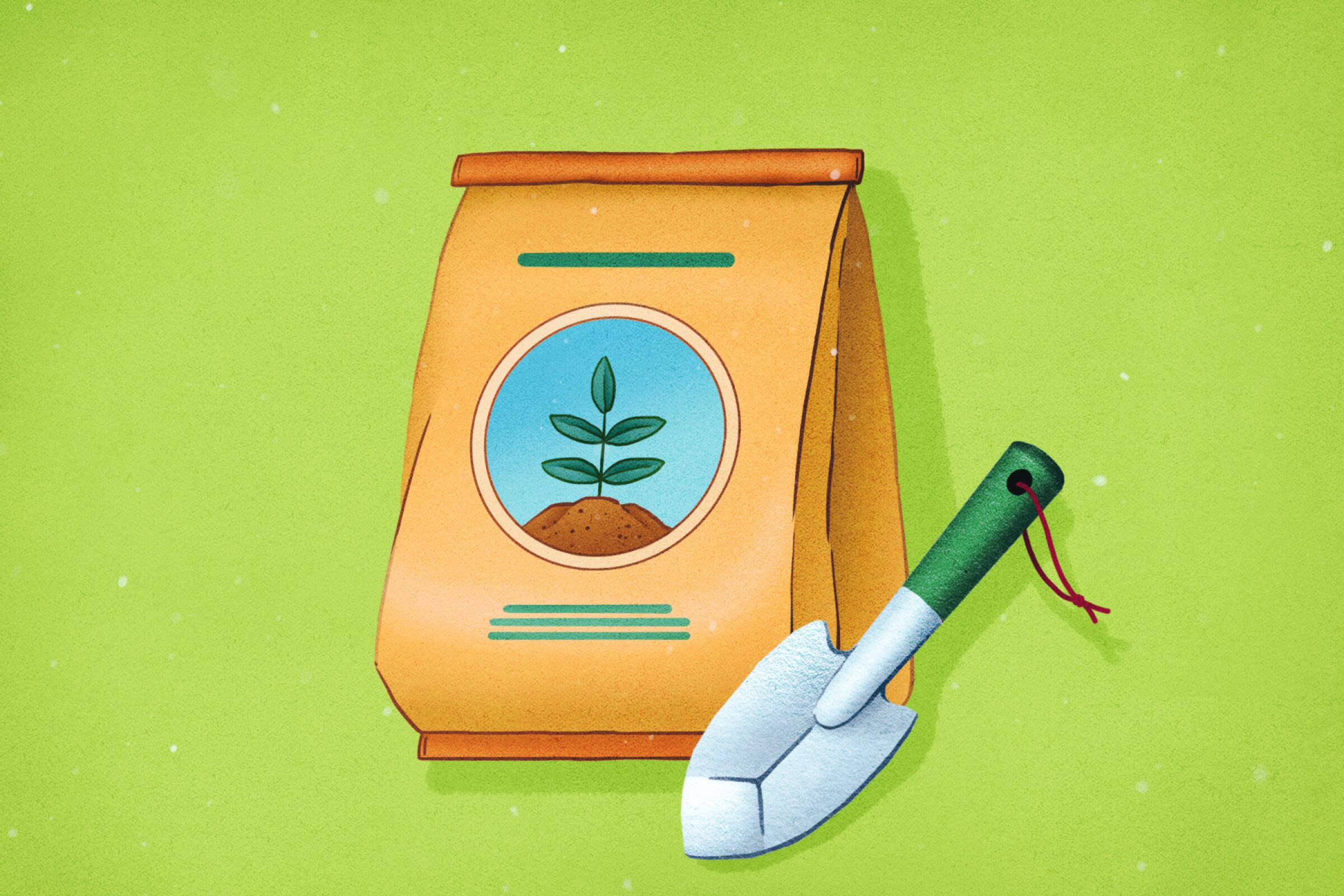Sign up for The Wild
We’ll help you find the best places to hike, bike and run, as well as the perfect silent spots for meditation and yoga.
You may occasionally receive promotional content from the Los Angeles Times.

The variety of fertilizers can be overwhelming — it seems as though there’s a special formulation for almost every plant on the planet. But fertilizing doesn’t have to be complicated or expensive, professional gardeners say.
If you start with good, nutrient-rich soil, your work is mostly done
“Most farmers barely fertilize in the growing season. All our efforts are in prepping our soil,” said Lauri Kranz, who creates gardens for clients and raises flowers and vegetables at her new Glassell Park farm through her business Edible Gardens L.A.
“You and your soil should be in constant dialogue,” she said. “The more attention and love you give to your soil, the more food, flowers and joy you will get out of your garden.”
Adding organic amendments such as well-aged manure, compost and seaweed to your soil not only improves plant health but also helps it retain water, said Yvonna Savio, creator of the Gardening in L.A. blog and a retired director of Los Angeles County’s Master Gardener program.
Adding those ingredients to a garden bed will increase soil temperatures as the organic materials decompose and “cook,” Savio said, so be careful not to plant until the soil has cooled down, at least a week or two after you’ve prepared the soil.
If you haven’t prepared the soil in your entire garden bed, Savio recommends adding a little organic fertilizer (about a teaspoon) each time you dig a hole to plant a seedling. Put the fertilizer in the bottom of the hole, cover it with about an inch of dirt and then plant the seedling.
“You don’t want the root ball to have immediate contact with the fertilizer,” she said, “because it burns the roots.”
Some gardeners put other organic things in the bottom of the hole to give the plant a little boost. When certified master gardener Lucy Heyming of Riverside plants tomatoes, for instance, she digs deeper than necessary and puts a banana peel and the shells from one egg in the bottom of the hole and covers them with a few inches of dirt before adding her plant. The decomposing shells and peel provide extra nutrients for the roots later in the season.
You’ve got to dig deep when it comes to tomatoes.
Kranz usually gardens in raised beds and uses organic potting soil, which has all the nutrients the plants need for the first season, she said. She adds mulch above ground to help retain moisture and in subsequent seasons adds compost to the soil to replenish nutrients.
Once vegetables or flowers start growing and producing buds, you can scratch a small amount of organic fertilizer into the soil, to give plants a boost as they try to produce fruit or blooms, Savio said
“If you’ve done the soil prep thing, you won’t need more fertilizer for plants that are just growing foliage, like lettuce or parsley,” Savio said. “But if we’re asking a plant to do extra-intensive work, like setting and maturing fruit, then they need an extra boost, especially with summer-maturing crops [that] have all that extra stress because of the tremendous heat. They need more water then as well, and the water and fertilizer is what enables the plant to produce the fruit we’re depending on it for.”
Savio scratches a small amount of all-purpose organic fertilizer, such as E.B. Stone or Whitney Farms, into the ground around the base of the plant and waters it into the soil.
She doesn’t pay attention to whether the fertilizer is designed for a specific plant but whether it has even “N-P-K” numbers, which stand for nitrogen (N), which adds greenery to the plant; phosphorous (P), which builds strong roots and plants; and potash or potassium (K), which is for flowering and fruiting. “You’ll see something that says 5-5-5 or 2-2-2; just look for even numbers to allow the plant to pick up what it needs.”
Kranz uses liquid seaweed for her fertilizer when the plants are setting fruit. She dilutes it in water and sprays or waters directly onto her plants, allowing them to feed through their leaves.
Don’t add too much fertilizer, especially if it’s heavy in nitrogen, because that can produce lots of foliage but little fruit or flowers. Overfeeding tomatoes is a common problem; gardeners end up with huge green plants that put all their energy into growing leaves and never produce fruit.
Unlike other garden plants, California natives don’t respond well to rich, loamy soil or too much water. They thrive in the poor, dry soils of Southern California that would be death to vegetables and our other relatively coddled landscape plants.
“Even adding compost and mulch is not a good thing for most California native plants because they’re not used to anything but the duff that naturally gathers on the ground, instead of the 3 to 4 inches of mulch we want in our gardens,” Savio said. “If you feed them, you’ll see tremendous foliage and growth but then they’ll die after a few years. Their growth is so vigorous from all that nutrition that they literally just burn themselves out.”
Sign up for The Wild
We’ll help you find the best places to hike, bike and run, as well as the perfect silent spots for meditation and yoga.
You may occasionally receive promotional content from the Los Angeles Times.